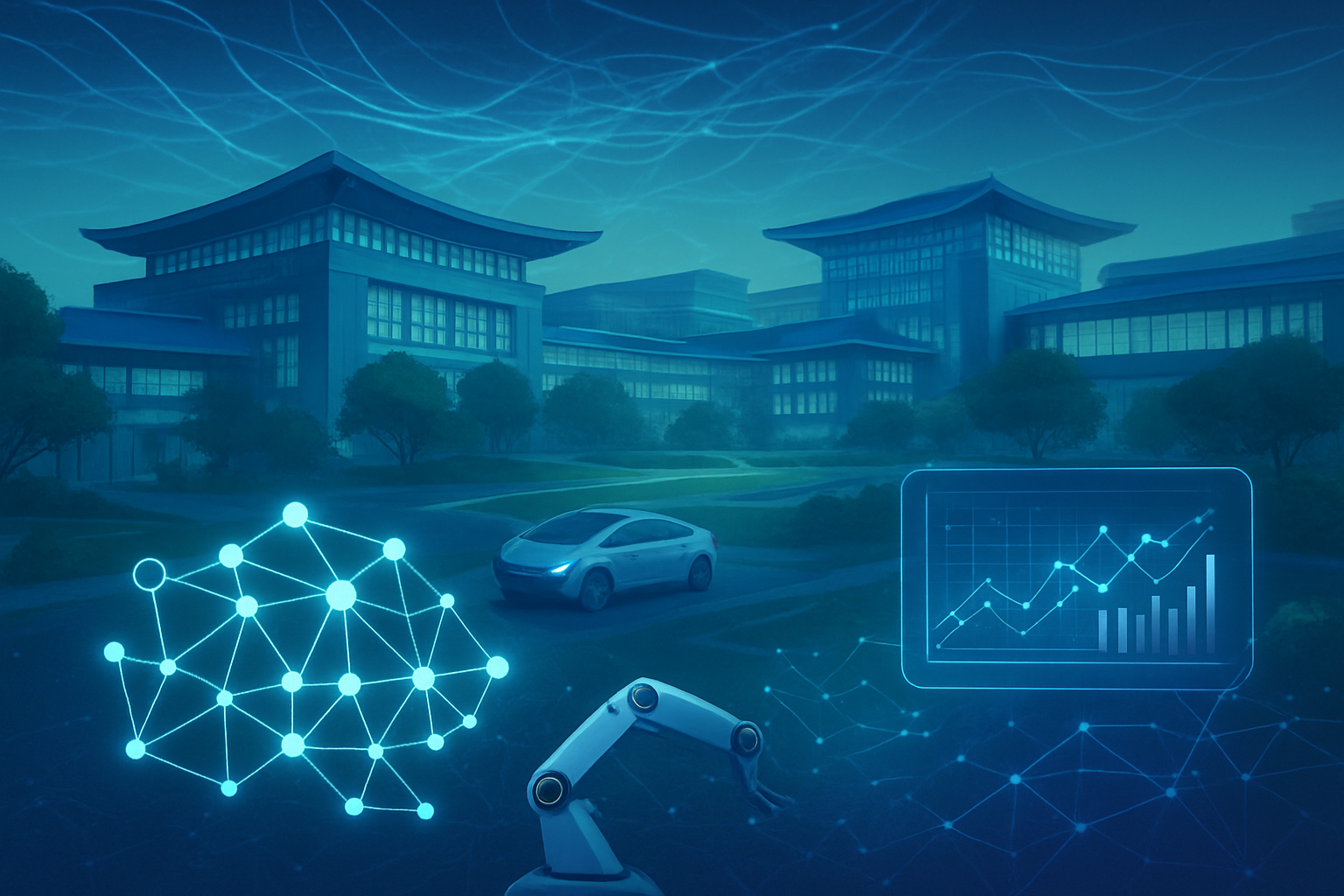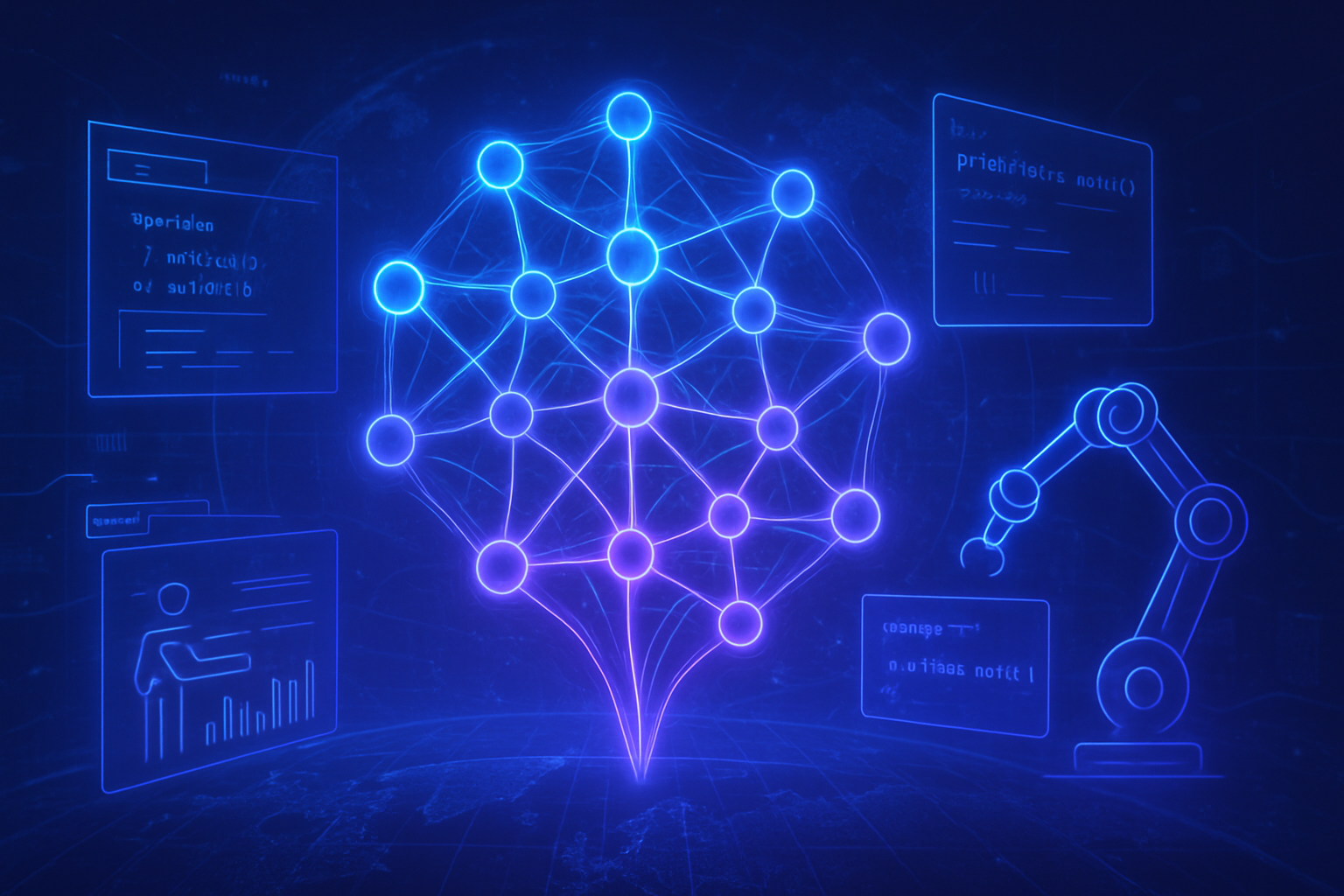China is forging ahead in the global artificial intelligence race, with its AI market experiencing explosive growth and unprecedented investment. Positioned as a major global player, the nation has poured billions into developing advanced AI capabilities, from cutting-edge large language models (LLMs) to widespread integration across diverse industries. However, beneath the impressive statistics and rapid technological advancements lies a significant paradox: despite this long and heavily funded development road, Chinese AI companies are struggling to achieve substantial profitability, facing a complex web of challenges that threaten to prolong the return on their massive investments.
The ambition to lead the world in AI by 2030, backed by extensive government support and a burgeoning ecosystem of over 4,500 AI companies, has driven China's AI industry to new heights. With market scale exceeding 700 billion yuan ($97.5 billion) in 2024 and forecasts predicting exponential growth to hundreds of billions more by the end of the decade, the sheer scale of development is undeniable. Yet, the path from innovation to sustainable financial returns remains fraught with hurdles, including intense domestic competition, consumer monetization difficulties, and the escalating costs of advanced research and infrastructure, all set against a backdrop of geopolitical tensions impacting critical supply chains.
Technical Prowess Amidst Commercial Headwinds
China's AI sector has demonstrated remarkable technical prowess, particularly in the realm of large language models and multimodal AI. By April 2024, an impressive 117 generative AI models had received government approval, showcasing a vibrant landscape of innovation. Key players like Baidu's (NASDAQ: BIDU) Ernie Bot, Zhipu AI's ChatGLM, iFlytek's (SHE: 002230) Spark, and new entrants such as DeepSeek and Kimi have pushed the boundaries of what's possible. DeepSeek, in particular, has garnered international attention for its open-source models, which offer a compelling combination of cost-effectiveness and performance, challenging established benchmarks.
These advancements represent a significant evolution from earlier AI approaches, moving beyond narrow, task-specific applications to more generalized, human-like intelligence. The focus on developing robust LLMs with multimodal capabilities allows for more sophisticated interactions and broader applicability across various domains. Unlike some Western models that prioritize sheer scale, Chinese developers often emphasize efficiency and practical deployment, aiming for quicker integration into real-world scenarios. This strategic emphasis is evident in initiatives like the "AI+ Initiative," launched in March 2024, which seeks to deeply embed AI into the real economy, from manufacturing to urban management. Initial reactions from the global AI research community have acknowledged China's rapid progress and the technical sophistication of its models, especially noting the rapid iteration and adoption of open-source strategies to accelerate development and reduce barriers to entry. However, the commercial viability of these models, particularly in a highly competitive and price-sensitive domestic market, remains a critical point of discussion.
Shifting Sands: Impact on AI Companies and Tech Giants
The intense development in China's AI sector has profound implications for its major tech companies and burgeoning startups. Established giants like Baidu (NASDAQ: BIDU), Alibaba (NYSE: BABA), Tencent (HKG: 0700), and SenseTime (HKG: 0020) have been designated as "AI champions" by the government, tasked with leading development in specialized AI sectors. These companies have invested billions, not only in R&D for LLMs but also in massive capital expenditures for computing resources and AI infrastructure. Alibaba, for instance, unveiled a 380 billion yuan ($53 billion) capital expenditure plan over three years, primarily for computing and AI.
However, the fierce competition for market share, especially in the enterprise sector, has triggered aggressive price wars. Companies like Alibaba have drastically cut prices for their AI model APIs—the Qwen-Long model's API saw a staggering 97% reduction—sacrificing margins in a bid to attract corporate customers. This aggressive pricing strategy, mirrored by ByteDance and Tencent, makes it incredibly challenging for firms to generate sufficient profits to justify their colossal investments. While cloud segments of these tech giants are seeing strong demand driven by AI workloads, the translation of this demand into sustainable revenue growth and overall profitability remains a significant hurdle. New "AI Tigers" like Baichuan AI, MiniMax, Moonshot AI, and Zhipu AI have emerged, attracting substantial venture capital and achieving multi-billion-dollar valuations, but they too face the same pressures to monetize their advanced technologies in a highly competitive landscape. The proliferation of powerful open-source models further intensifies this challenge, as it reduces the incentive for enterprises to purchase proprietary solutions.
Broader Implications and Global Standing
China's aggressive push in AI significantly reshapes the broader global AI landscape. With a long-term strategy to achieve global AI leadership by 2030, its developments fit into a wider trend of national AI strategies and technological competition. The widespread integration of AI across Chinese industries, from healthcare to smart cities, demonstrates a concerted effort to leverage AI for national economic and social transformation. This comprehensive approach, backed by robust data availability from its massive internet user base (1.123 billion users as of June 2025) and a strong focus on infrastructure, positions China as a formidable contender against Western AI powers.
However, this ambition is not without its concerns and challenges. Geopolitical factors, particularly U.S. export controls on advanced semiconductor technology, represent a significant constraint. These restrictions compel China to accelerate the development of a self-reliant AI chip ecosystem, a strategic necessity that adds substantial development costs and could potentially put Chinese AI companies years behind their U.S. rivals in terms of access to state-of-the-art hardware for training their most advanced models. Comparisons to previous AI milestones, such as AlphaGo's victory or the emergence of ChatGPT, highlight China's rapid catch-up and, in some areas, leadership. Yet, the unique challenges of monetizing AI in its domestic market and navigating international tech restrictions create a distinct developmental trajectory for China, one that prioritizes strategic self-sufficiency alongside technological advancement.
The Road Ahead: Future Developments and Challenges
Looking ahead, China's AI sector is poised for continued rapid development, albeit with an ongoing focus on overcoming its profitability hurdles. Near-term developments will likely center on further refinement and specialization of existing LLMs, with an increased emphasis on multimodal capabilities and integration into industry-specific applications. The "AI+ Initiative" will continue to drive the deep embedding of AI into traditional sectors, seeking to unlock efficiency gains and new revenue streams. Long-term, the strategic imperative of achieving self-reliance in critical AI hardware, particularly advanced chips, will remain a top priority, driving significant investment in domestic semiconductor R&D and manufacturing.
Experts predict that while China will continue to be a powerhouse in AI research and application, the path to significant and sustainable profitability for many of its AI companies will remain long and challenging. The current trend of aggressive price wars is unsustainable in the long run and will likely lead to market consolidation. Companies will need to find innovative business models beyond just API sales, focusing on high-value enterprise solutions, specialized services, and potentially exploring international markets more aggressively where consumer willingness to pay for AI services might be higher. Addressing the high R&D costs, optimizing computational efficiency, and fostering a culture of long-term commercial strategy, rather than just short-term government contracts, are critical challenges that need to be addressed for China's AI vision to fully materialize financially.
A Defining Moment in AI History
China's journey in artificial intelligence represents a defining moment in the global tech landscape. The nation's unparalleled investment, rapid technological advancement, and ambitious integration strategies underscore its commitment to becoming a global AI leader. Key takeaways include the impressive scale of its AI ecosystem, the rapid development of sophisticated LLMs, and the strategic imperative of achieving technological self-reliance. However, the persistent struggle to translate these monumental efforts into significant profitability highlights a critical challenge that will shape the future trajectory of its AI industry.
The current period is one of intense competition and strategic recalibration for Chinese AI companies. The outcome of their efforts to overcome monetization challenges, navigate geopolitical headwinds, and build a sustainable business model will have far-reaching implications, not just for China but for the entire global AI ecosystem. What to watch for in the coming weeks and months includes further developments in domestic chip production, shifts in pricing strategies among major AI providers, and the emergence of new, profitable business models that can effectively capitalize on China's vast AI capabilities. The balance between technological leadership and financial viability will be the ultimate test for China's AI future.
This content is intended for informational purposes only and represents analysis of current AI developments.
TokenRing AI delivers enterprise-grade solutions for multi-agent AI workflow orchestration, AI-powered development tools, and seamless remote collaboration platforms.
For more information, visit https://www.tokenring.ai/.





